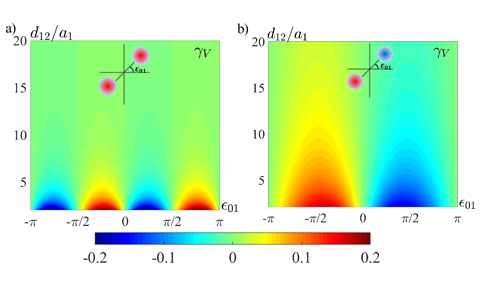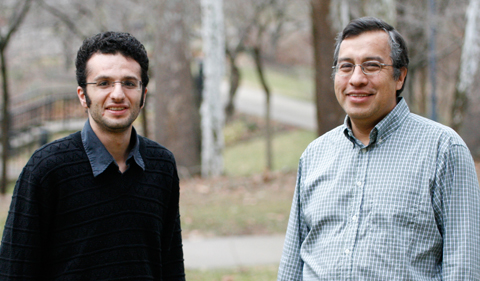Two physicists predict that electronic currents of graphene can be split into two parts, thereby allowing scientists to manipulate the properties of graphene in new ways.
Ohio University alum Dr. Mahmoud Asmar (Physics PhD ’15), and Dr. Sergio Ulloa, Professor of Physics & Astronomy, and a member of OHIO’s Nanoscale and Quantum Phenomena Institute, have co-authored an article “Minimal geometry for valley filtering in graphene,” published this week as a Rapid Communication in Physical Review B, a journal of the American Physical Society. Asmar is a postdoctoral researcher at Louisiana State University and Ulloa’s former graduate student.
According to Ulloa, their article merits a rapid communication because the two researchers provide a new model to control graphene’s electric current, thereby facilitating the development of new applications in electronic applications and devices.
“Graphene is a one-atom-thick layer of carbon and an intriguing and most promising new material for electronics,” says Ulloa. “Despite being extremely thin, it is a fantastic conductor of electricity, and researchers in many parts of the world are investigating ways to take advantage of its features.”
The movement of electrons in graphene is very unusual, as electrons mimic light in free space (and effectively appear to have no mass), although moving with a velocity much lower than the speed of light. This kind of movement is part of what gives electrons in graphene their ability to overcome obstacles and impurities and conduct electricity so well.
“However, this is not the end of the story,” explains Asmar, “since electrons in graphene also have one of two types of valleys while they move within the material. These valleys are associated with their intrinsic quantum mechanical character, such as their mass, charge or spin.”
A valley, in this atomic level description, is the characteristic momentum (or velocity), around which electrons move. There are two valleys (K and K’), with different momenta in graphene. When a current is injected by a battery, its electrons go with momentum Q = K+q AND Q=K’+q’, populating both valleys. It is desirable to be able to choose either q or q’ but not both (which is typically the case in experiments now). The researchers have found a simple yet effective way to indeed achieve the separation of the current through both valleys.

This map of valley current asymmetry shows how valley-polarized the current can be. Red (+0.2) and blue (-0.2) extremes indicate pure-valley K or K’, while green indicates equal valley currents (no polarization). The polarization changes as two obstacles (red and blue circles in the inset) are oriented with respect to the current direction. On the left panel, obstacles are identical; on the right they are asymmetric, which enhances the valley polarization. The polarization decreases as the obstacles are separated further (top of the panels). (CREDIT: Mahmoud Asmar)
When injecting a current, Asmar says, experimentalists typically create moving electrons with both types of valleys, and it is difficult to separate them. Asmar and Ulloa propose how it would be possible to split the electronic current into its two valleys. The approach relies on inversion symmetry, that is, the creation of properly oriented obstacles that break an important symmetry of the graphene crystal.
The implementation of the predicted geometry in this work may provide experimentalists a way to separate and control the currents, thereby contributing to a better understanding and utilization of this fascinating material.




















Comments